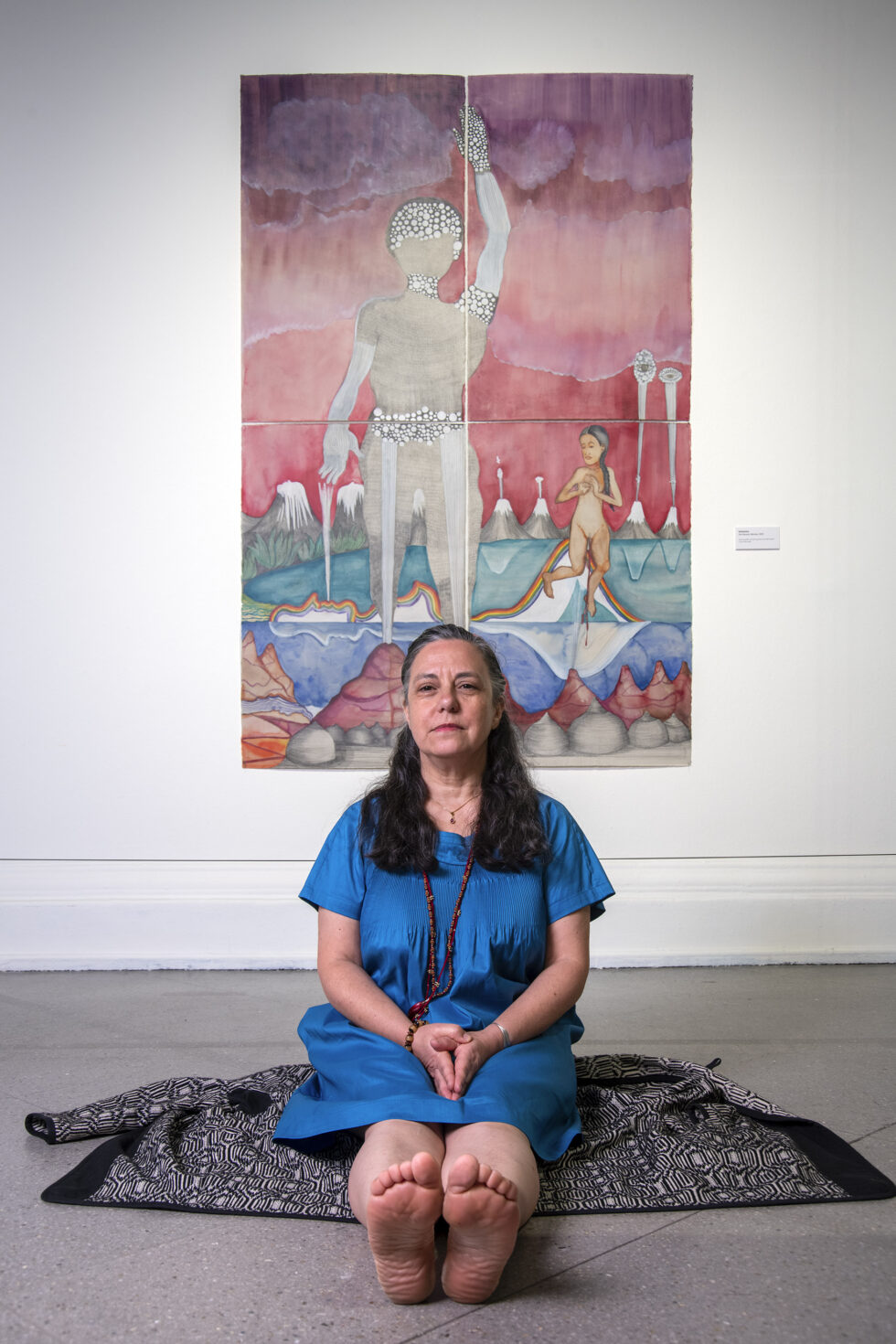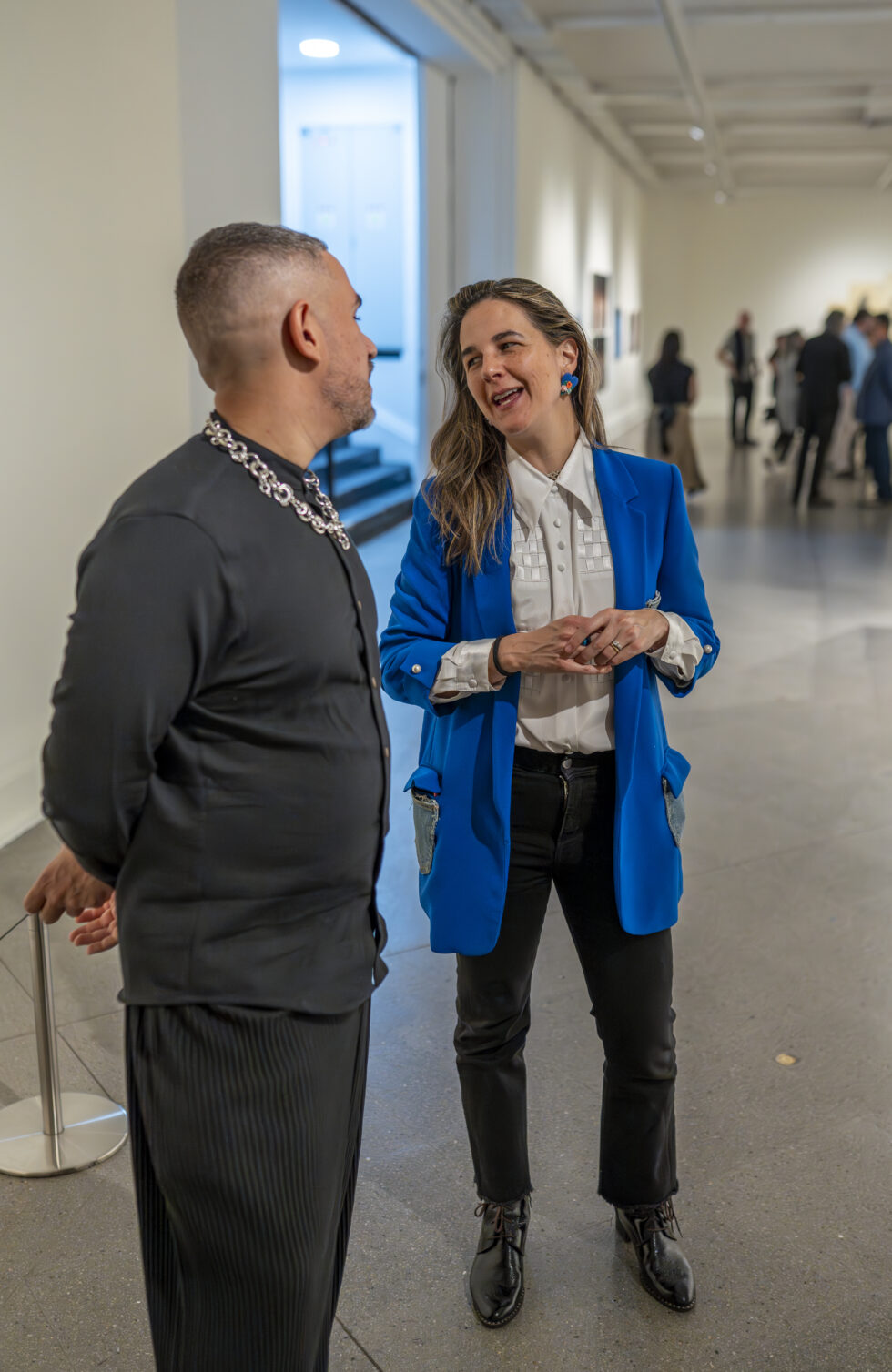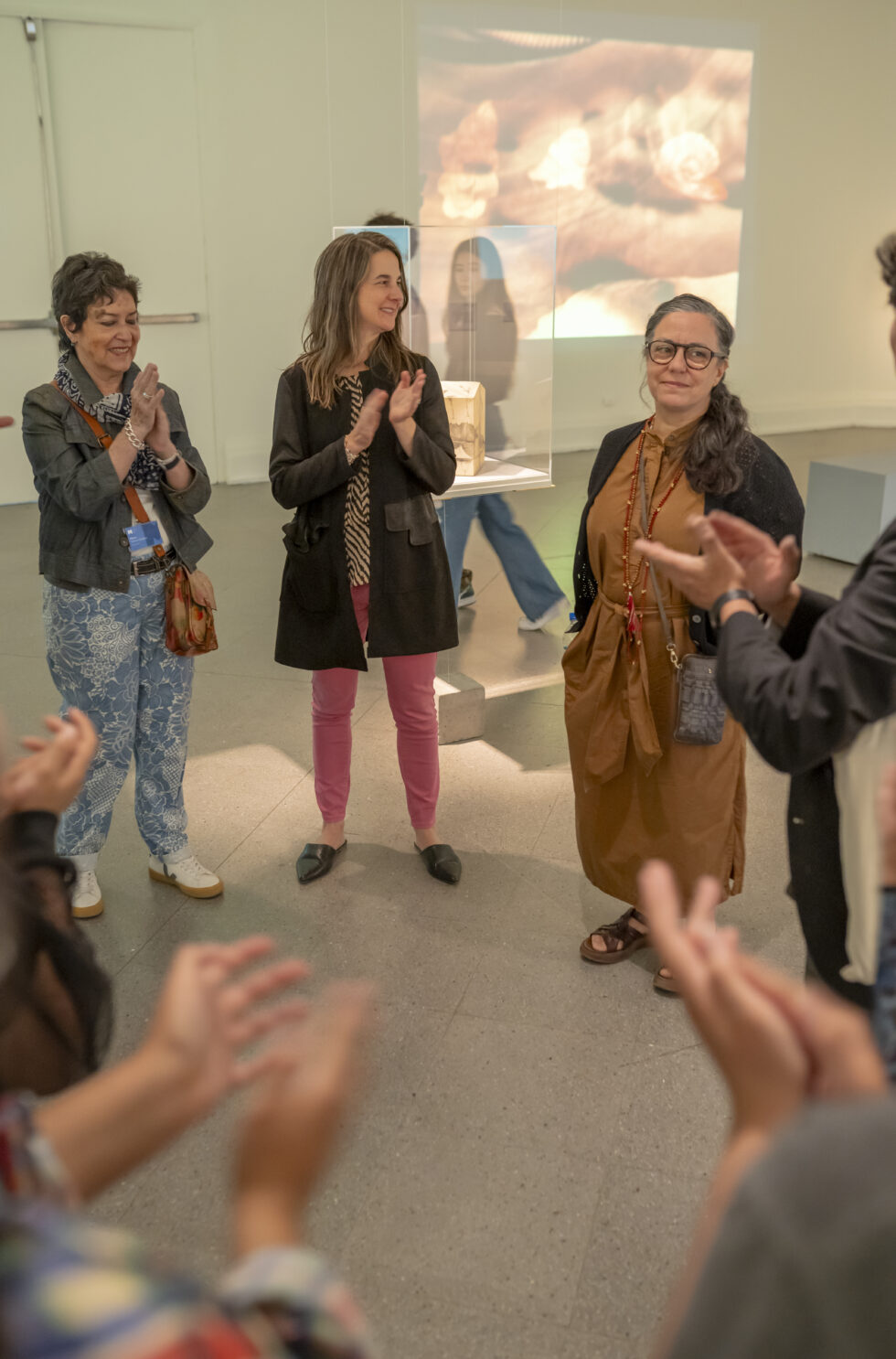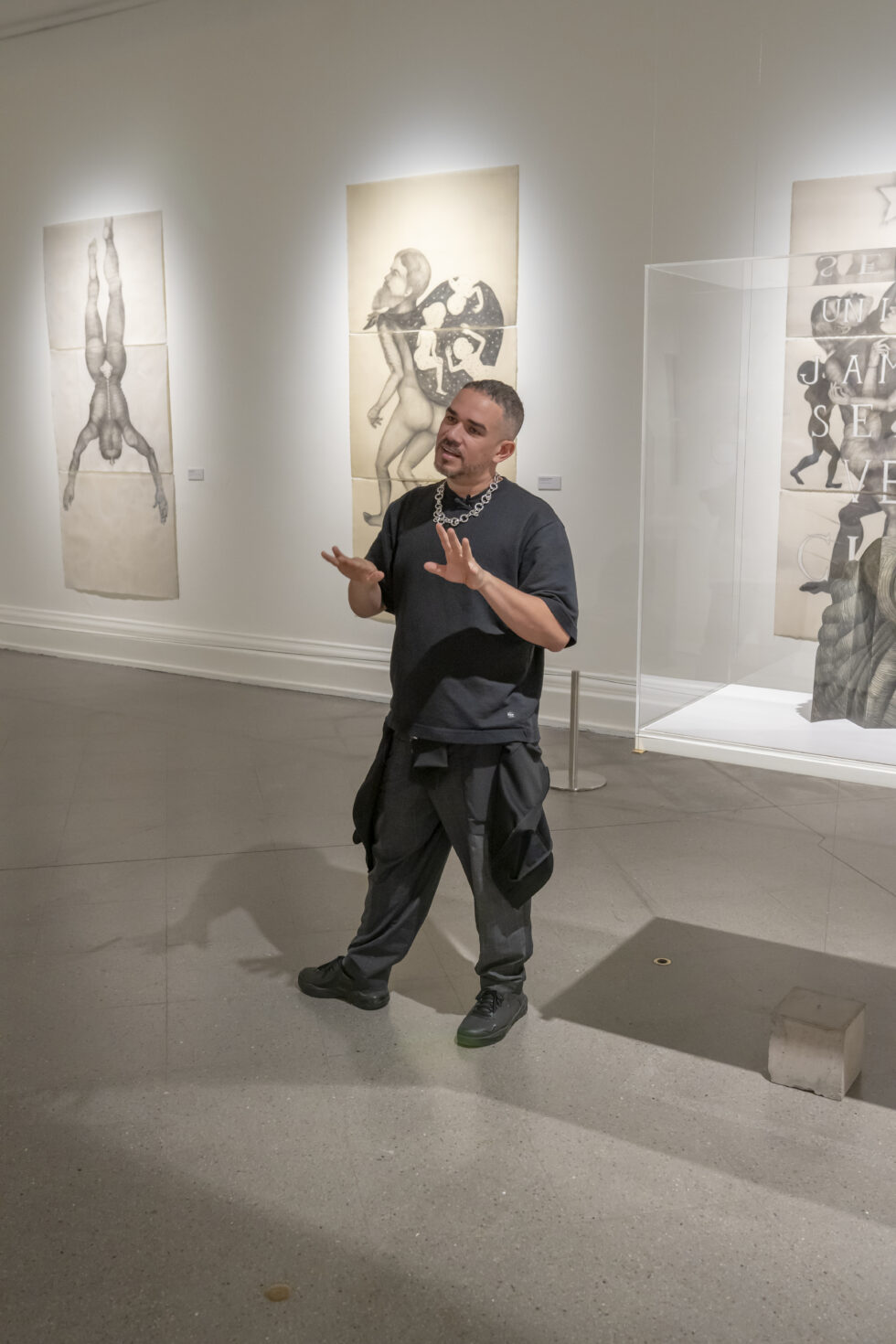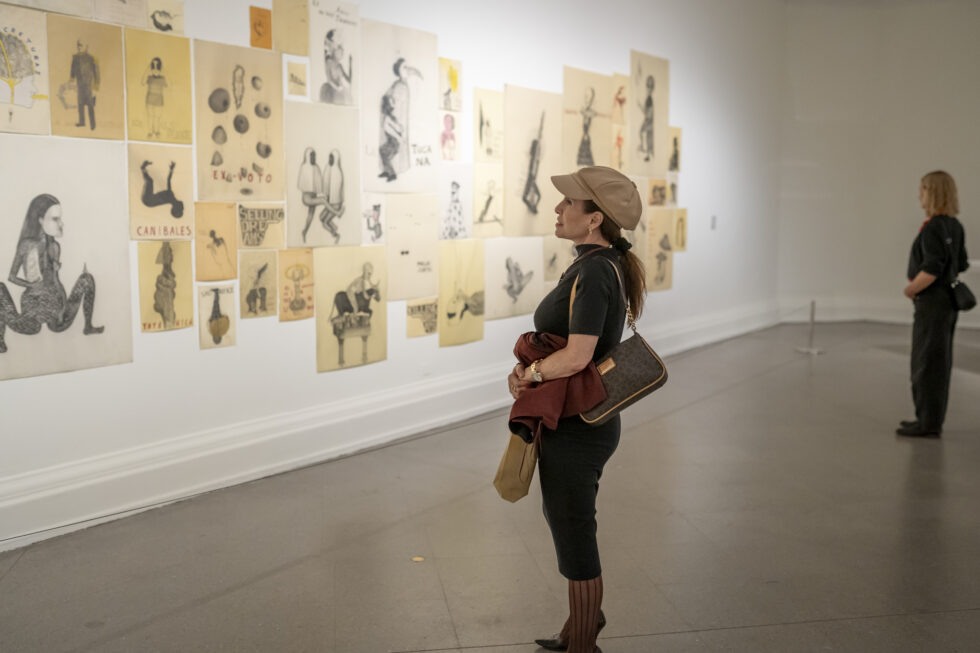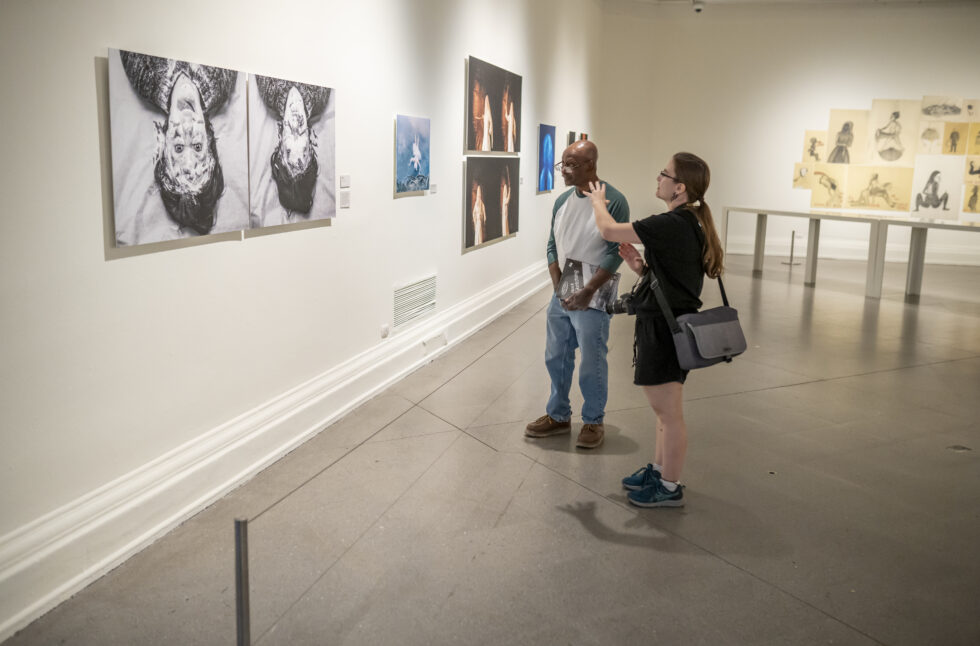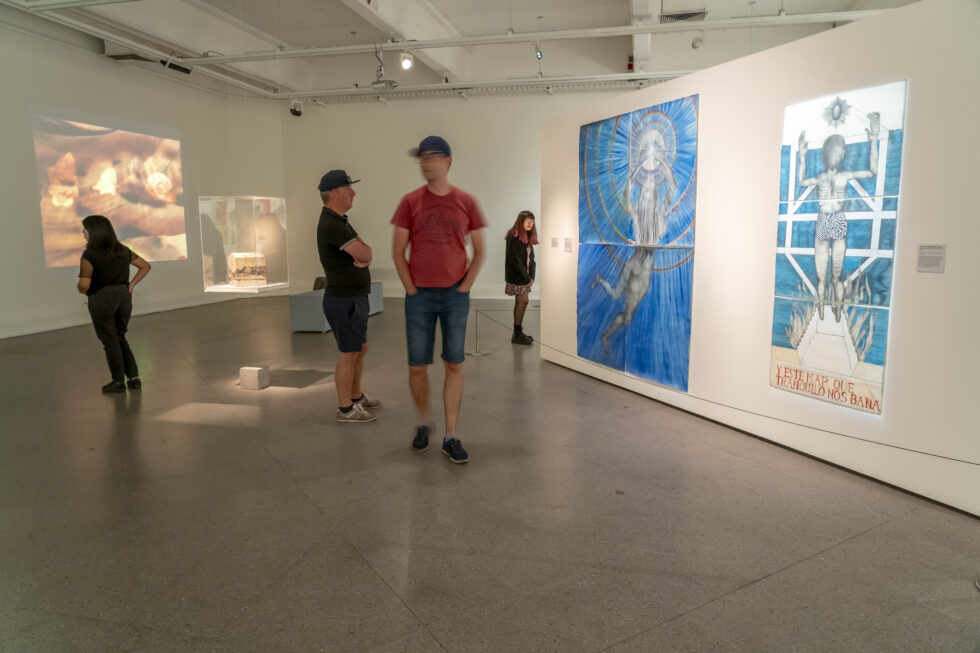Museo Nacional de Bellas Artes, Santiago, Chile – From 6 December 2024 to 9 March 2025.
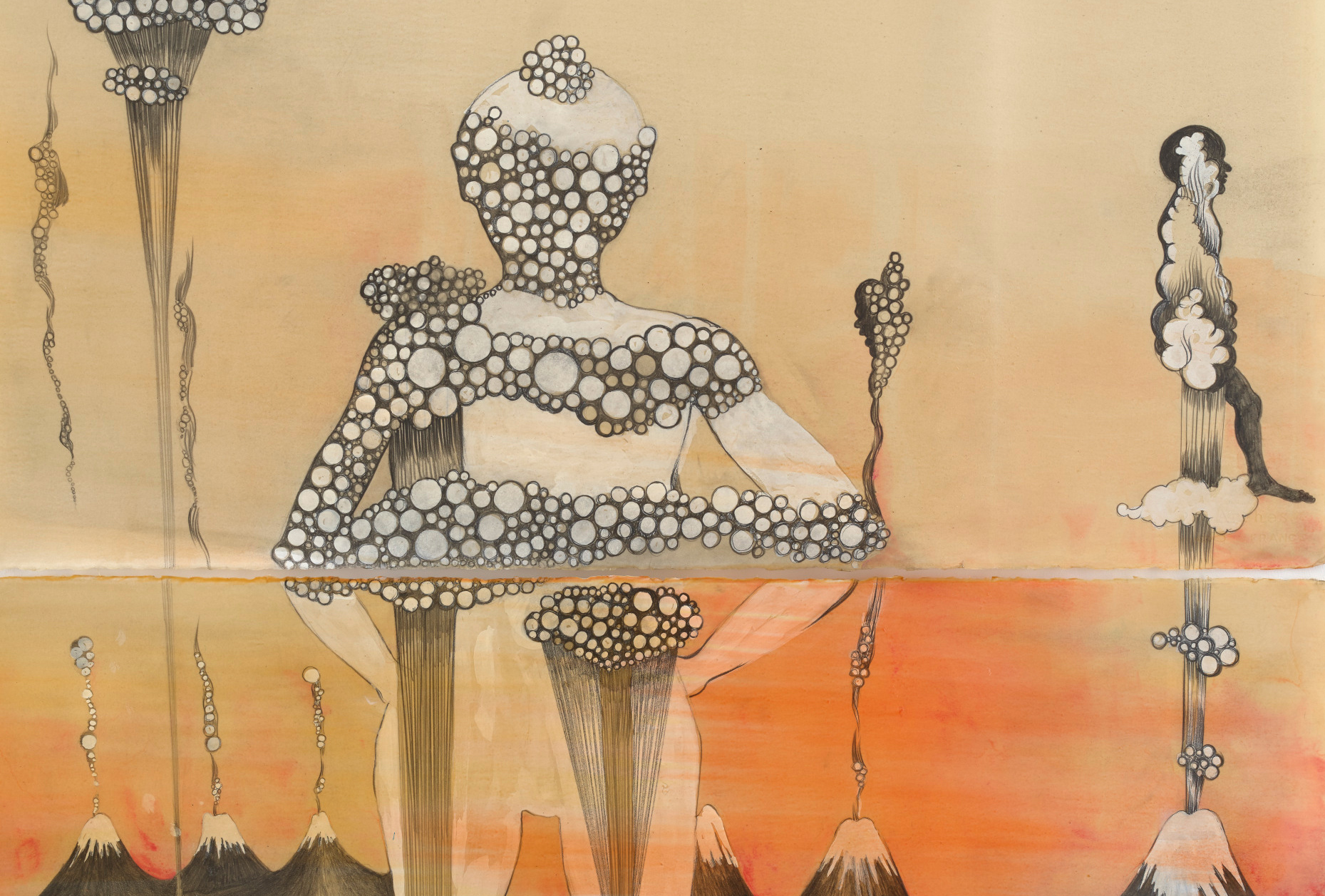
Sandra Vásquez de la Horra, El despertar de un volcán (detalle), 2019. © Cortesía de la artista © Foto Eric Tschernow
Sandra Vásquez de la Horra: The awakened volcanoes
The Museo Nacional de Bellas Artes (MNBA) presents the first solo exhibition of the artist Sandra
Impressions of the show The awakened volcanoes at Museo Nacional de Bellas Artes from 6 December 2024 to 9 March 2025, Santiago, Chile. Portrait of Sandra Vásquez de la Horra: Jorge Brantmayer. Other photos: Cristián Rojas – Cosmovisiones.
Vásquez de la Horra, organised by the Denver Art Museum (DAM) and financed by the Ministry of Cultures, Arts and Heritage. The artist is internationally renowned for her participation in the 59th Venice Biennale (2022) and for having received the Käthe Kollwitz Prize in 2023.
Within the framework of the international programmatic line promoted by the MNBA, aimed at strengthening the Latin American artistic circuit and highlighting Chilean artists through individual exhibitions, Sandra Vásquez de la Horra: The awakened volcanoes is presented. Organised by the Denver Art Museum (DAM), this exhibition by the national artist settled in Germany is financed by the Ministry of Culture, Arts and Heritage, through the Executive Secretariat for the Visual Arts. The exhibition approximates the career of Vásquez de la Horra, recognised for her participation in the 59th Venice Biennale (2022) and for having received the Käthe Kollwitz Prize in 2023.
After its run at the Denver Art Museum (between April and July 2024) curated by Raphael Fonseca (DAM), the exhibition brings together nearly 190 works, including drawings, paintings and engravings that reflect the richness and versatility of Vásquez de la Horra’s artistic practice; she develops visual narratives that combine autobiographical, symbolic and mythological elements, exploring themes such as identity, memory and the oneiric.
We are proud to welcome Sandra Vásquez de la Horra with the exhibition The awakened volcanoes, which is materialised through an international alliance that we have promoted as a programmatic axis of the Museum. We are convinced that presenting Sandra at the MNBA, a Chilean artist with an outstanding international career, will generate great interest in our broad and diverse public. This exhibition adds to our proposal to recognise in Chile the work and career of artists from the diaspora. In 2023 we presented the major retrospective Soñar el agua by Cecilia Vicuña, which then travelled to Buenos Aires and Sao Paulo. This year we highlight Eugenia Vargas-Pereira, with an exhibition recently inaugurated in Chillán, her hometown, after being exhibited at the MNBA. We hope that The awakened volcanoes will be an opportunity for different generations to be enchanted by the creative universe of an artist of relevance in contemporary creation
says Varinia Brodsky Zimmermann, director of the Museo Nacional de Bellas Artes.
From her earliest drawings influenced by her roots in Chile, Vásquez de la Horra has developed a unique style, using paper not only as a surface for his drawings, but as a sculptural element in itself. Her works, made with graphite pencil, watercolour or beeswax immersion treatments and folded in the manner of a leporello, explore themes such as spirituality, folklore and mythology, incorporating female figures that are transformed into surreal landscapes, mountains and volcanoes.
I have always had an obsession with the north and nomadism, with that world of the precarious that has accompanied me since I was young. I remember reading Cecilia Vicuña’s books and how they influenced my way of working, guiding me towards a search for what is light, for what is weightless. My roots are also very present: my great-grandmother was from Antofagasta, my grandfather from Santa Cruz, Bolivia. My childhood was marked by the Chilean landscape, the mountains, and by experiences such as attending the Fiestas de Higuerillas, with its mixture of the pagan and the religious, the masks and the diabladas. At the age of seven I got to know Rapa Nui, and at 17, Brazil. Both were initiatory journeys that deeply enriched my South American imagination
says Sandra Vásquez de la Horra.
Denver Art Museum curator Raphael Fonseca notes:
Drawing is a fundamental aspect of her practice, as it is a flexible and dynamic medium that is still essential to the creation of contemporary art. Sandra Vásquez de la Horra’s artwork often includes symbols from different cultures shaped by her roots in Chile, the imprint of her family history with the mythologies of indigenous peoples and European colonial rule in Central and South America.
After its stay at the MNBA, the exhibition will travel to MALBA in Buenos Aires (April to July 2025) and to the Institute of Contemporary Art in Los Angeles, USA (September 2025 to January 2026).
Recognised with multiple awards and distinctions, Vásquez de la Horra has established herself as one of the most influential Chilean artists on the international contemporary art scene.










Museo Nacional de Bellas Artes (MNBA) Santiago, Chile – The awakened volcanoes. Photos: Cristián Rojas – Cosmovisiones.
About Raphael Fonseca
Raphael Fonseca holds a PhD in Art History and Criticism from the State University of Rio de Janeiro. Since 2021, he has been Curator of Modern and Contemporary Latin American Art at the Denver Art Museum. He is the chief curator of the 14th Mercosur Biennial, Estalo, to be held between March and June 2025 in Porto Alegre, Brazil. He is also part of the curatorial team for the third Counterpublic triennial, scheduled for 2026 in St. Louis, USA.
In 2023, he co-curated the 22nd SESC_Videobrasil Biennial with Renée Akitelek Mboya and Solange Farkas. Previously, between 2017 and 2020, he worked as a curator at the Museum of Contemporary Art of Niterói (MAC Niterói, Brazil).
His curatorial practice is characterised by the juxtaposition of temporalities to generate contemporary reflections. His interests include humour, the absurd, pop culture and the conceptualisation of exhibitions as assemblages, scenographies and performances. Although he collaborates with artists from diverse backgrounds and generations, his focus is particularly on creators from the so-called Global South.
In 2015, he was awarded the Marcantonio Vilaça Curatorial Prize. He has also collaborated as a writer for specialised magazines such as ArtNexus, Terremoto and ArtReview.
